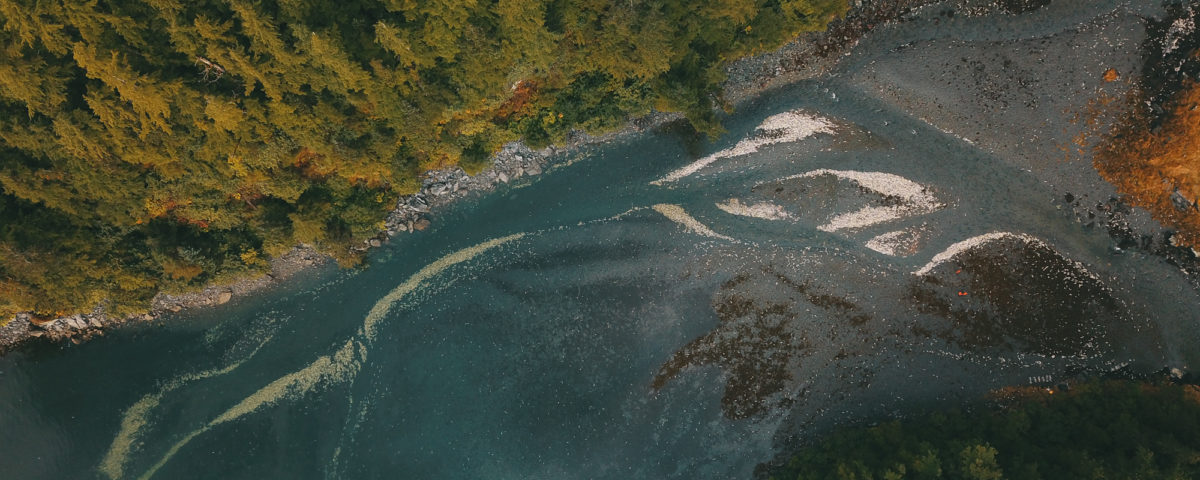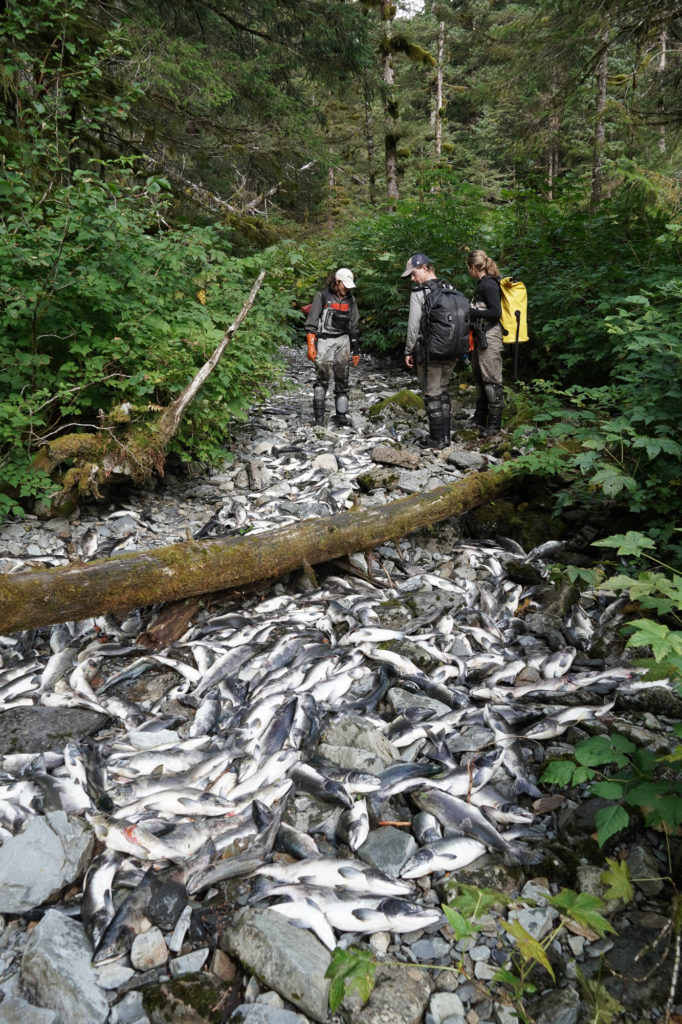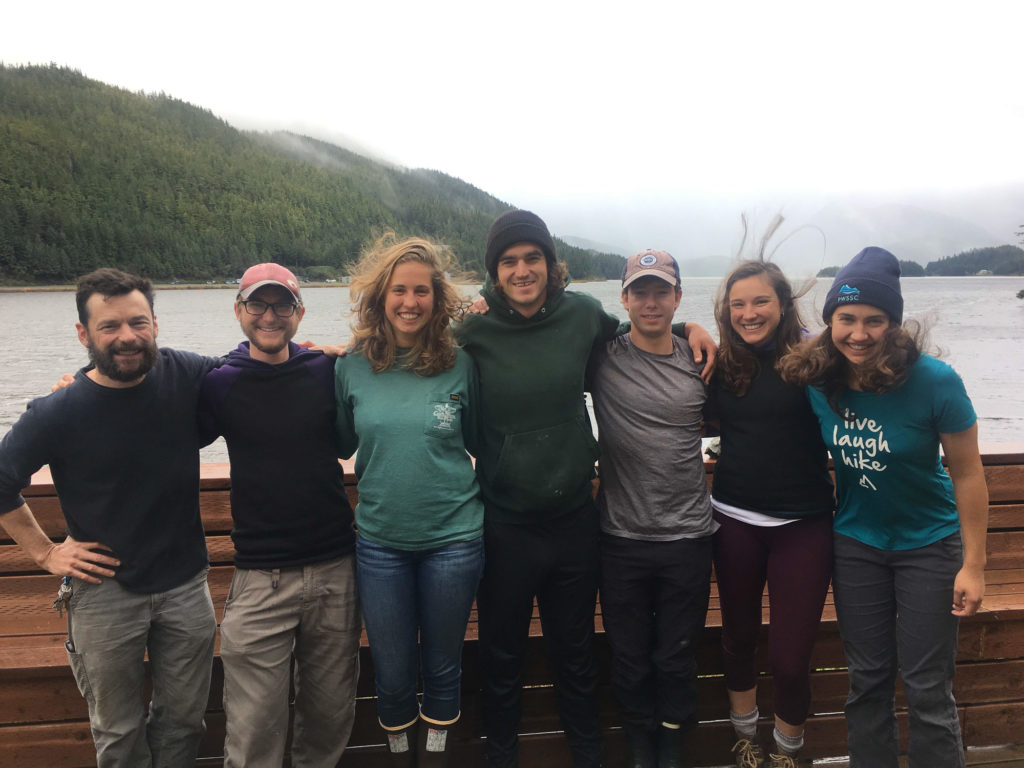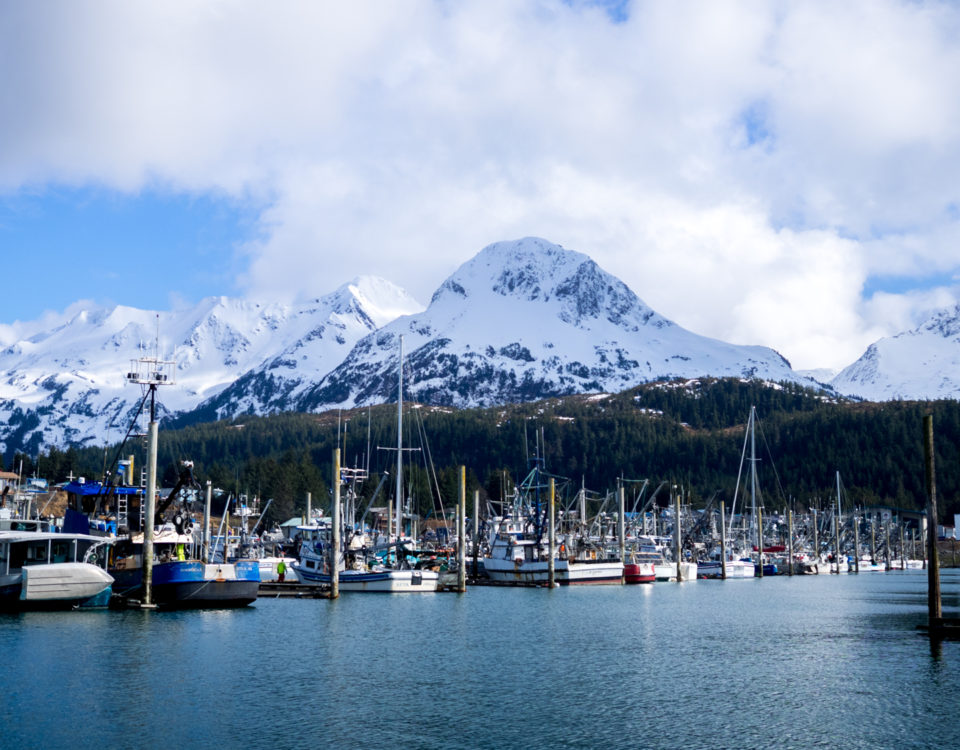Hatchery Wild field season 2019

Field Season Marked by Low Flow and High Pre-spawn Mortality
By Teal Barmore, November 13, 2019
Aerial photo by Brad von Wichman
It was a strange summer for the Prince William Sound Science Center field crews collecting data on pink salmon for the pedigree component of the Alaska Hatchery Research Project (AHRP) in Prince William Sound. The Science Center has been involved in doing field work for AHRP, a large, multi-organization study on straying and reproductive success of hatchery-origin pink and chum salmon, since the pilot study in 2012. This summer, a reduced field crew focused on three of the five “pedigree streams” in western Prince William Sound; this part of the study is designed to determine the reproductive success of hatchery-origin pink salmon compared to their wild counterparts.

Removing an otolith from a pink salmon. Photo: Dave Janka
For the pedigree component, crews have been walking up and down five different streams in Prince William Sound collecting detailed data from as many dead fish as possible since 2015 (the field study was also carried out in 2013 and 2014, but with less field coverage). Every day during the spawning period in August and September they count the number of alive versus dead salmon and take samples from dead fish. Technicians record fish length, height, and sex; the sampling location in the stream (which ranges from the intertidal zone up into freshwater reaches of the streams); at what life stage they died (pre- or post-spawn); whether they were preyed upon; how long they have been dead by noting the color of their gills; and any unusual characteristics of the fish. They also remove an otolith (ear bone), which is used to determine if the fish was of hatchery or wild origin, and heart tissue for DNA extraction.
The otoliths will be analyzed by the otolith lab at the Alaska Department of Fish and Game in Cordova. Each hatchery in Prince William Sound marks their fish by exposing the fish to a different sequence of water temperatures, which affects dark and light patterns visible in the growth rings of the fish’s ear bones during their early development. Thus, otoliths from fish leaving one hatchery display a distinctly different visual pattern from the otoliths of fish leaving another hatchery. After collecting otoliths from returning adults in the field, a lab technician can later identify their origin by reading these marks using a microscope.

Photo: Brad von Wichman
Heart tissue is sent to the genetics lab in Anchorage where they will extract the DNA of each fish so they can assign offspring back to their naturally-spawning parents two years earlier (pink salmon have a fixed 2-year life cycle).
In a normal year, field crews work long hours under drenching rain and high river flows in August and September. This year, virtually no rain led to extremely low stream flows. Field crews observed unprecedented pre-spawning die offs and unusually late migration into the streams. Dr. Pete Rand, the lead researcher for the AHRP field component in Prince William Sound reported that, normally, the fish are entering the streams by the second week in August and sample numbers rise quickly. This year, the crews took virtually no samples in the month of August. According to Pete, the fish finally started what was for many an ill-fated journey into the streams after some rain in early September. The rain stopped and the rivers dried up again, but many of the fish had already entered the streams on the high tide. Soon, thousands of fish were restricted to tide pools without enough water to return to the bays. They all suffocated. Pete recounts “During the first 10 days of September, our dead fish count in one of our streams rose from virtually none to nearly 30,000 dead pink salmon, all dying prior to spawning. Our field crews estimated 10,000 died over a single night. We have never documented anything like that in the past.”
Although Pete worries about the effects on future production, this didn’t cause any problems for the pedigree study. Because this is near the end of the project, researchers just wanted to know if the fish, who would by now be grandchildren of the original fish sampled in 2015, survived to return to the stream as adults. With this information researchers can make a family tree from the fish returning to the streams every two years and determine the relative reproductive fitness of hatchery-hatchery, hatchery-wild, and wild-wild spawning pairs.

The hatchery wild crew this year from left to right: Pete Rand, Garrett Dunne, Kharis Schrage, Greg St. Aubin, Chandler Sharp, Leah Fitchett, and Darby Finnegan. This crew did an amazing job this year despite the challenge of long days to collect data on the huge slug of fish that came in late. According to Pete, they were “a super motivated crew with a strong work ethic.” During the peak period, the crews collected more than 1,000 samples a day!
The field crews were able to collect around 30,000 samples in September, which should be enough to accomplish the objectives of the study. However, how climate change might affect streams and salmon in our region may be an even bigger question. Pete concludes, “This may be our ‘new normal’, with natural spawning restricted to a very narrow time window, and fish spawning under very crowded conditions.” Time will tell how these recent climate conditions play out for pink salmon in Prince William Sound.
Read more news features like the Marine Heat Wave Update and a rundown on our new project on Copper River Sockeye spawning migrations on our news page!



